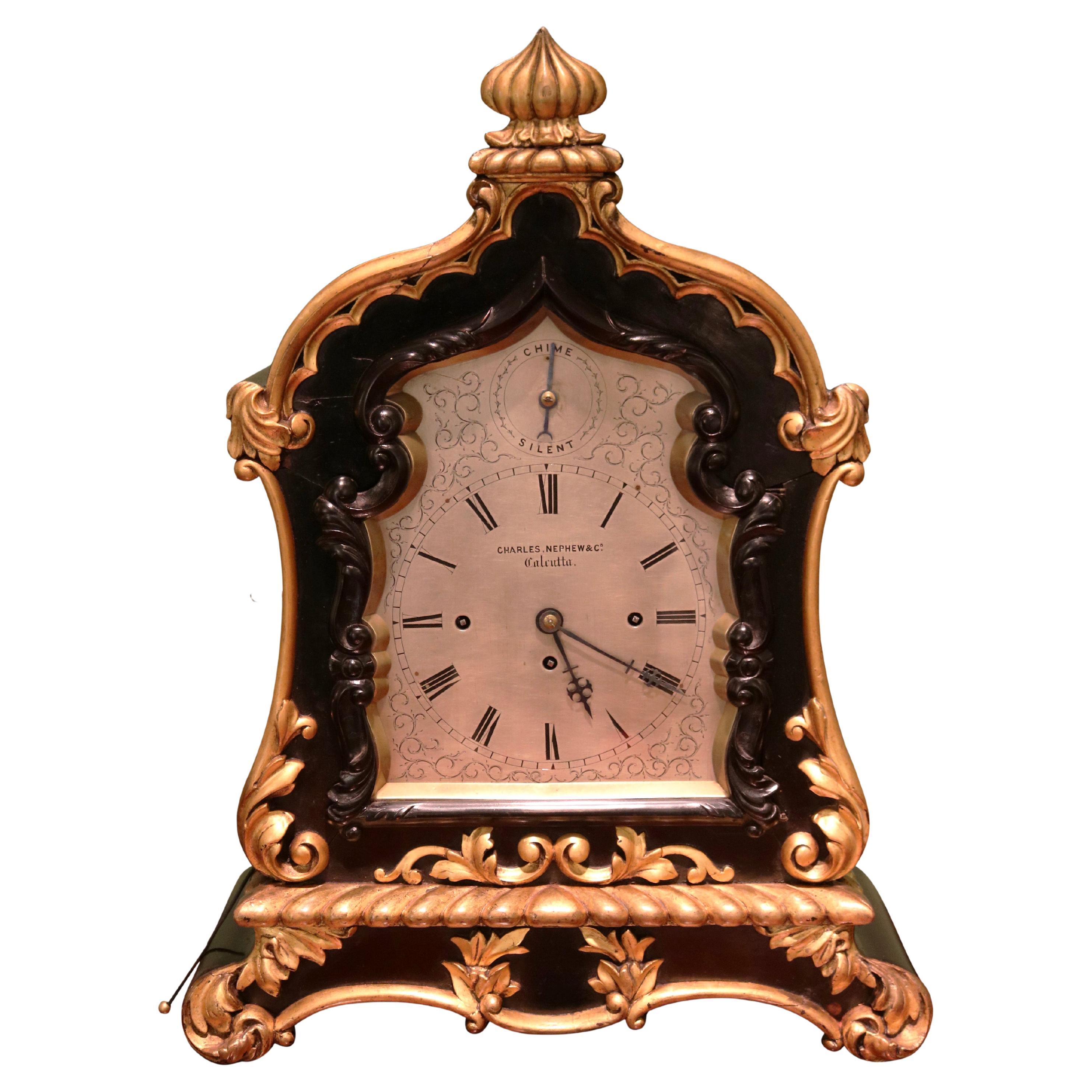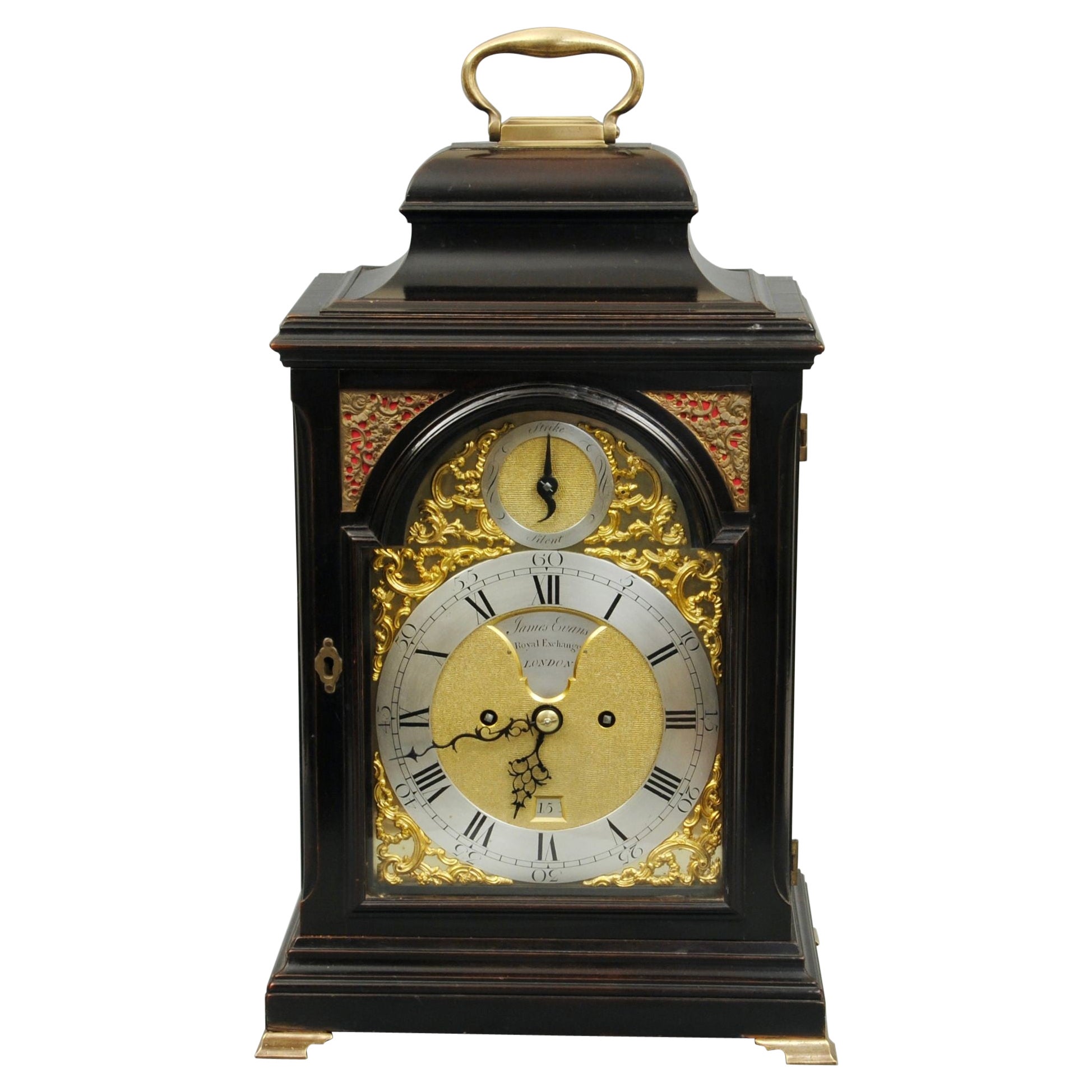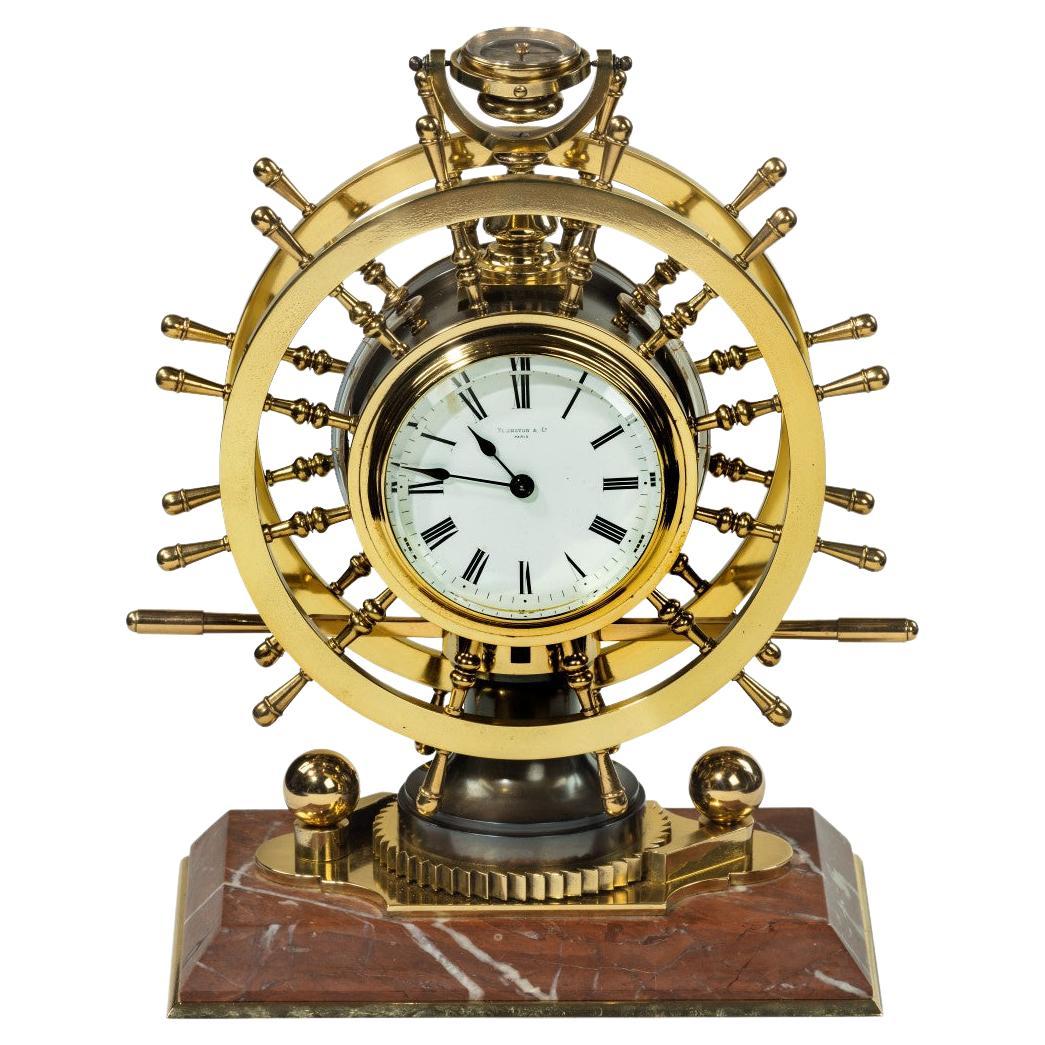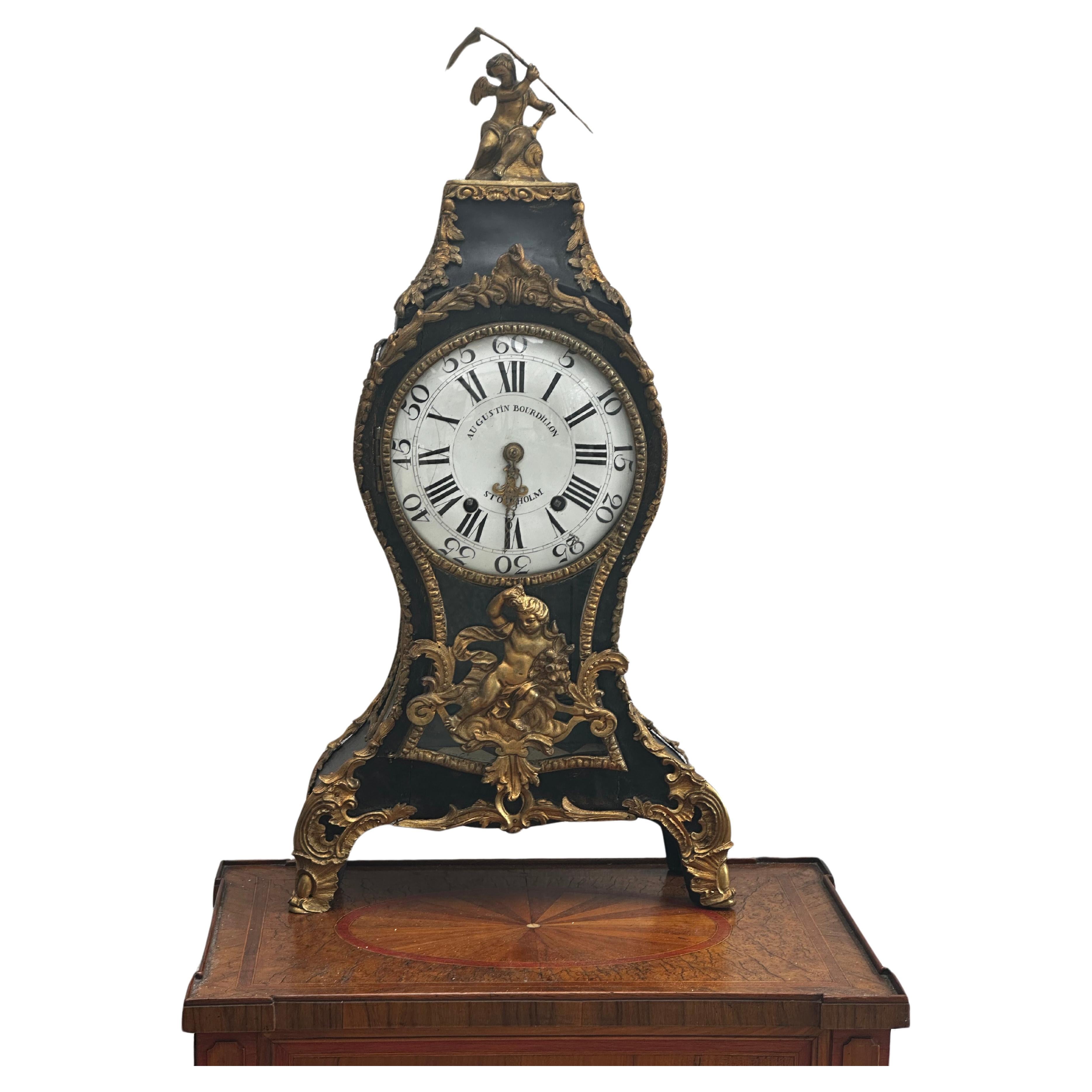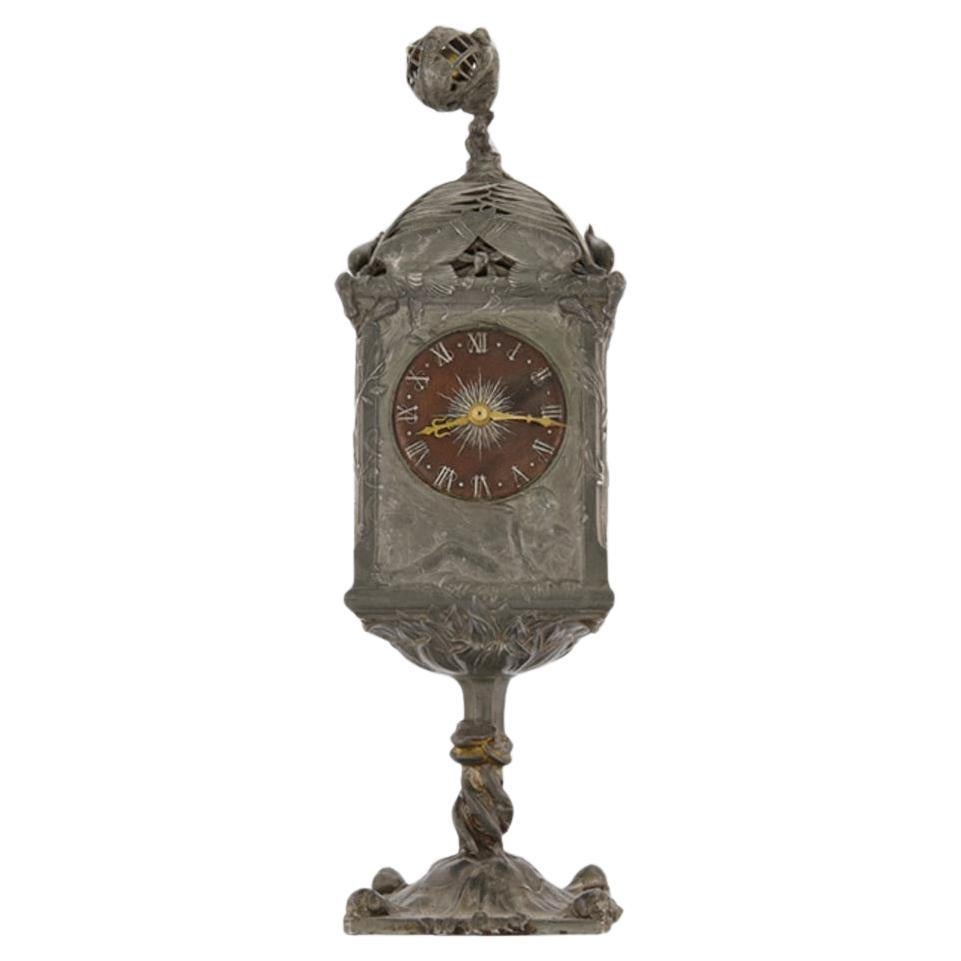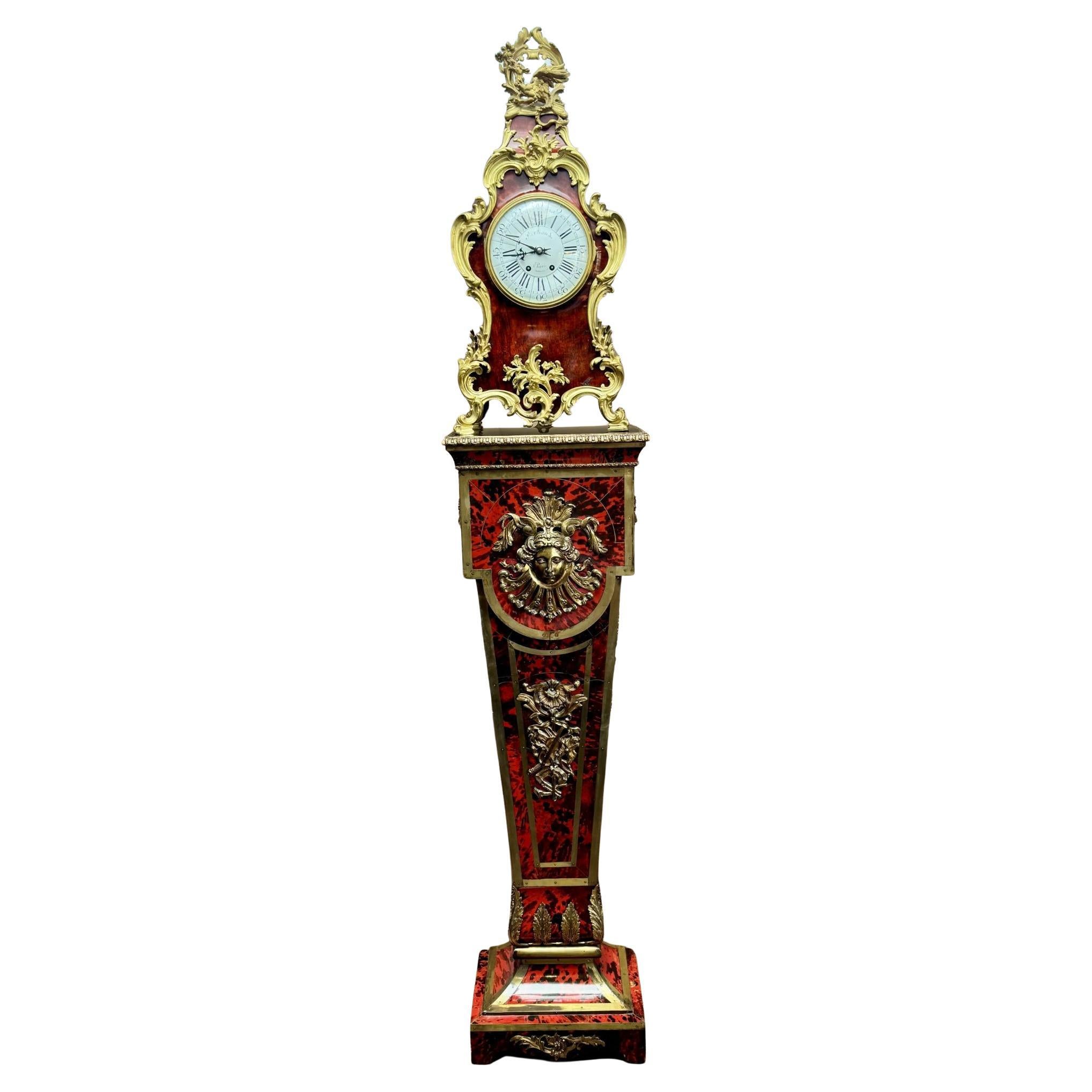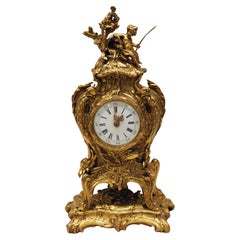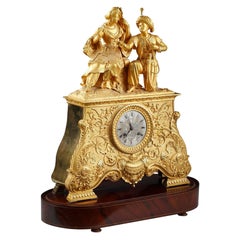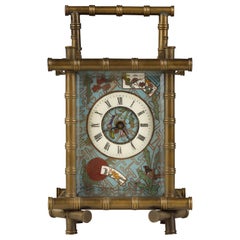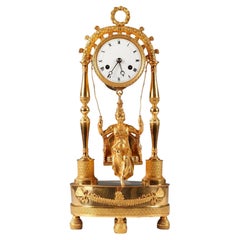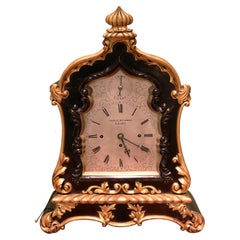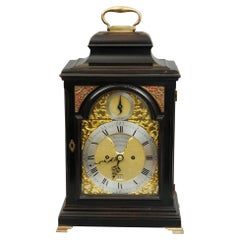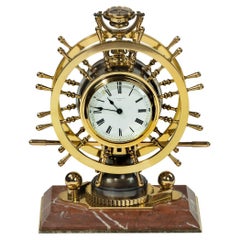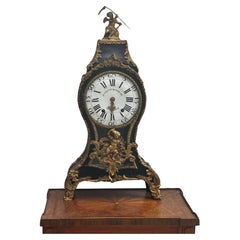Items Similar to Easel Clock, Signed Elkington & Co, England, Circa 1890
Want more images or videos?
Request additional images or videos from the seller
1 of 8
Easel Clock, Signed Elkington & Co, England, Circa 1890
$17,546.08per item
$21,932.60per item20% Off
£13,332.88per item
£16,666.10per item20% Off
€14,800per item
€18,500per item20% Off
CA$24,623.29per item
CA$30,779.12per item20% Off
A$26,849.40per item
A$33,561.75per item20% Off
CHF 13,954.94per item
CHF 17,443.68per item20% Off
MX$321,423.17per item
MX$401,778.97per item20% Off
NOK 177,004.88per item
NOK 221,256.10per item20% Off
SEK 165,798.20per item
SEK 207,247.74per item20% Off
DKK 112,747.62per item
DKK 140,934.52per item20% Off
Quantity
About the Item
Signed Elkington & Co
Numbered Rd 92173
Beautiful rectangular table clock executed in gilded and silvered electrotyped metal, decorated in relief with butterflies, music instruments and theater masks, surmounted by two angels crowning with a wreath a portrait of a man in profile in medallion. Ornated in the lower corners with the muses of Theater and Music centering a medallion. It is presented in a wooden frame lined with green velvet, opening by a glazed door and forming an easel.
As The Art Journal wrote as soon as 1844, “The electrotypes are perfect; the finest lines, the most minute dots are as faithfully copied as the boldest objections”. With this new technique, developed in England thanks to Elkington, it became then lucrative market for recreating famous works of art in metal as well as creating some new ones, then cheaper than bronze casts.
The great Birmingham firm of Elkingtons, was largely the creation of George Richards Elkington (1800-1865), who worked from 1824 in Birmingham as a manufacturer of silver-mounted scent bottles. By 1829 the business had expanded sufficiently for a branch to have been established in London. In the late 1830’s the Elkingtons began making experiments to apply the principles of electro-metallurgy to gilding and plating with silver and in 1840 the patent was at last taken out. Elkingtons owed their rise to a position amongst the most important silversmiths of the country to their exploitation of this new process and the two of the most famous designers then employed, both of them French, Albert Wilms (1827-1899) and Morel-Ladeuil (1820-1888), who helped to make Elkingtons’ reputation with their elaborate exhibition pieces.
- Creator:Elkington & Co. (Maker)
- Dimensions:Height: 20.48 in (52 cm)Width: 15.75 in (40 cm)Depth: 11.03 in (28 cm)
- Materials and Techniques:
- Place of Origin:
- Period:
- Date of Manufacture:circa 1890
- Condition:Wear consistent with age and use.
- Seller Location:PARIS, FR
- Reference Number:Seller: 528/21stDibs: LU3860328967362
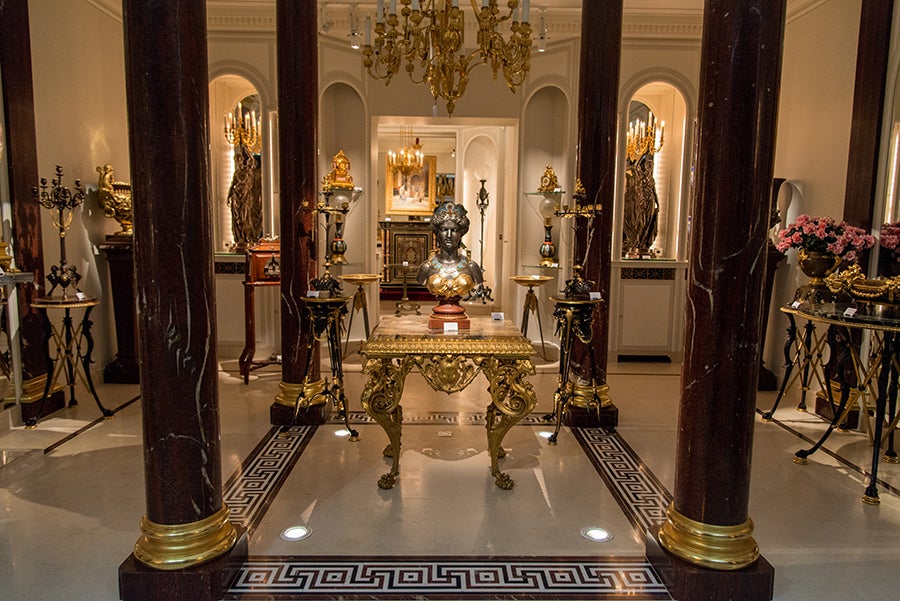
About the Seller
4.9
Gold Seller
Premium sellers maintaining a 4.3+ rating and 24-hour response times
Established in 1997
1stDibs seller since 2018
90 sales on 1stDibs
Typical response time: <1 hour
Associations
International Confederation of Art and Antique Dealers' Associations
- ShippingRetrieving quote...Shipping from: Saint Ouen, France
- Return Policy
More From This Seller
View All"The Source" Gilt bronze Clock attr. to L. Messagé & F.Linke, France, circa 1890
By François Linke
Located in PARIS, FR
Charming clock in the shape of a Rocaille-inspired cartel in chiseled and gilded bronze. Scalloped marine-inspired decor representing a trophy with oars, dolphins, reeds and flowers ...
Category
Antique 1890s French Rococo Revival Table Clocks and Desk Clocks
Materials
Bronze, Enamel
Leila and the Giaour Gilded Bronze Clock, France, Circa 1830
Located in PARIS, FR
Dial signed Polti Frères
Measures: With base or glass: Height 61 cm (24 in.), width 51,5 cm (20.3 in.), depth 23.5 cm (9,2 in.)
Without base: Height 52 cm (20,5 in.), width 42 cm (16.5 in.), depth 12.5 cm (4.9 in.)
Important philhellenic clock in burnished and amati gilded bronze, finely chiseled, representing on the terrace a couple elegantly dressed in "the turkish style", and richly decorated with foliage, scrolls and flowers. The feet, decorated with water leaves, rest on an oval wooden base covered with a globe.
The theme of the clock comes from The Giaour, a fragment of a Turkish Tale, an English poem by Lord Byron published in may 1813 which tells the thwarted love of a Venetian, the Giaour – term by which the Turks designate infidels and especially Christians – and of Leila, a slave belonging to Hassan’s seraglio, military leader of a Turkish province. The betrayal of Leila discovered, she will be thrown into the sea and her lover will avenge her by killing Hassan, then taking refuge in a monastery.
Symbol of prestige and modernity, the decorative clocks are a reflection of the taste of the era of a wealthy bourgeoisie and may be the subject of diplomatic gifts or between individuals.
Beyond the purely decorative aspect of such objects, watchmaking in the 19th century is part of a subtle mix of political, historical and literary references.
This philhellenic movement converning the West finds a particular echo in France, one of the countries with the United Kingdom and Russia having suported the Greeks during their war of independance (1821-1830) to free oneself from the grip of the Ottoman Empire. Many clocks...
Category
Antique 1830s French Mantel Clocks
Materials
Bronze
$12,803 Sale Price
55% Off
Aesthetic Movement Carriage Clock, France, 19th Century
Located in PARIS, FR
Fine aesthetic movement clock in cloisonné enamel and gilded bronze, decorated with polychromed birds and flowers, and geometric gilded ornaments on a ...
Category
Antique Late 19th Century French Aesthetic Movement Table Clocks and Des...
Materials
Bronze, Enamel
Ormolu Clock "with a Swing", France, circa 1820
Located in PARIS, FR
Very fine floral and decorated Restauration period ormolu clock, figuring two baluster columns joint together by a floral arch, and topped by a crown of roses. Roman numbers indicate...
Category
Antique 1820s French Restauration Mantel Clocks
Materials
Bronze
Japanese Style Clock attr. to L'Escalier de Cristal, France, Circa 1885
By L'Escalier de Cristal
Located in PARIS, FR
Rare Japanese clock in double patina bronze with suspended dial.
The portico and dial, with calligraphic Kanji numerals complemented by hands featuring an undulating dragon, are deco...
Category
Antique 1880s French Japonisme Mantel Clocks
Materials
Bronze
"Chinese" Giltwood Clock After a Design by Thomas Johnson, England, circa 1860
By Thomas Johnson, London 1
Located in PARIS, FR
Important giltwood clock with a mirror background of Rococo inspiration with a rich sinuous and asymmetrical decoration representing a Chinese couple ab...
Category
Antique 1860s English Chinese Chippendale Mantel Clocks
Materials
Giltwood
You May Also Like
A mid 19th century striking bracket clock by Charles, Nephew & Co Calcutta
Located in London, GB
A rare mid 19th Century Bracket Clock of unusual large proportions, the silvered dial 8-day quarter repeat movement striking on bells and gong, by Charles. Nephew & Co, Calcutta. Th...
Category
Antique Mid-19th Century English Early Victorian Table Clocks and Desk C...
Materials
Ebony, Giltwood
18th Century Bell Top Bracket Clock by James Evans
Located in Lincolnshire, GB
An elegant 18th century 8 day verge bracket clock in ebonised case by James Evans London.
The back plate beautifully engraved.
The movement has ...
Category
Antique Late 18th Century English Mantel Clocks
Materials
Wood
Victorian Brass Novelty Clock by Elkington & Co
By Elkington & Co.
Located in Lymington, Hampshire
A Victorian brass novelty clock by Elkington & Co., in the form of a double steering-wheel, one wheel enclosing a clock and the other a barometer, with ...
Category
Antique 1880s English Victorian Mantel Clocks
Materials
Brass
Late 19th Century table clock, made in Stockholm by Auguste Bourdillon
Located in SE
A table clock made in Stockholm by Auguste Bourdillon, 1728- 1799. He were a manufacturer of clocks and watches in Geneva and then in Stockholm 1761 - 1...
Category
Antique 1770s Swedish Rococo Table Clocks and Desk Clocks
Materials
Bronze
Jules BRATEAU, Four-Sided Clock On A High Base, 1900
By Jules BraTeau
Located in SAINT-OUEN-SUR-SEINE, FR
Made in 1900, our clock is a major work by sculptor and goldsmith Jules Brateau. This renowned craftsman won several medals at world's fairs.
Jules Paul...
Category
Antique Early 1900s French Renaissance Revival Table Clocks and Desk Clocks
Materials
Pewter
Outstanding quality antique 19th century French Boulle bracket clock and stand
Located in Ipswich, GB
Outstanding quality antique 19th century French Boulle bracket clock and accompanying pedestal, having a quality antique 19th century bracket clock with a round white dial with Roman...
Category
Antique 19th Century French Grandfather Clocks and Longcase Clocks
Materials
Brass
More Ways To Browse
Antique Easels
Used Art Easels
Galvanized Metal Table
Antique Wood Easel
Profile Medallion
Elkington Gilt
Elkington & Co. On Sale
Easel Clock
Brass Zodiac
Italian Gold Clock
Jaeger Lecoultre Table
Kitchen Clocks
Midcentury Alarm Clock
Quartz Vintage Clock
Vintage World Clock
Large Table Clock
Mechanical Clocks
Antique Pocket Clock
